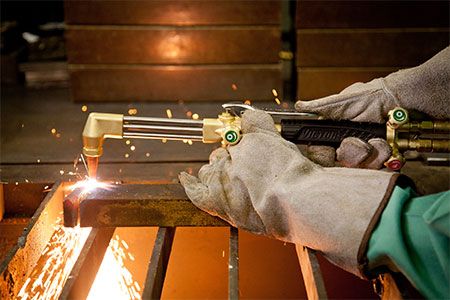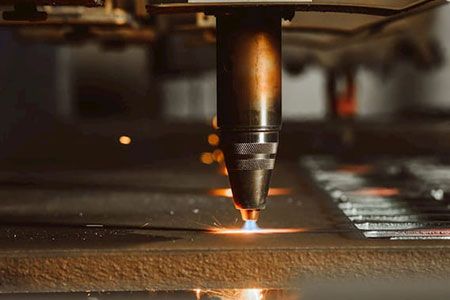Oxy-Fuel Cutting
A Leading Economical Cutting Process which also referred to as Oxyfuel flame cutting and Oxyfuel gas cutting
Oxy-Fuel Cutting

Oxyfuel Cutting Advantages and Disadvantages
Advantages:
Straight-edge quality and high accuracy.
Bevel strip cutting.
Pierce mild steel up to 4 inches thick (101 millimeters) to 5 inches (127 millimeters) thick.
Edge start and cut steel 10 inches (254 millimeters) to 12 inches (304 millimeters) thick.
With multiple torches, produce multiple parts, reducing time and labor.
DISAdvantages:
Cannot cut stainless steel under normal circumstances.
Slower cut speeds compared with plasma cutting.
Thin material cutting might warp.
Difficult to produce holes smaller than two times the steel’s thickness.

Oxyfuel Cutting Gas Types
Acetylene: Hottest gas but can be unstable and expensive.
MAPP: Hot gas but not as available as other gases.
Propane: Cheaper and clean-burning but not as hot as other gases.
Natural gas: Cheaper and widely available but offers low delivery pressure.
